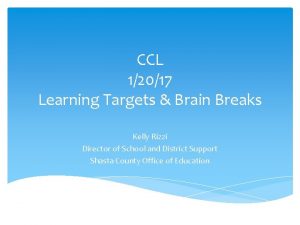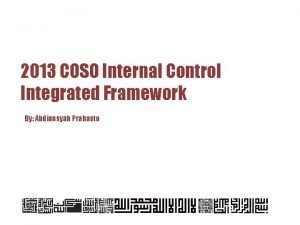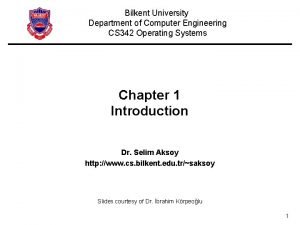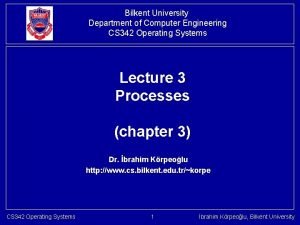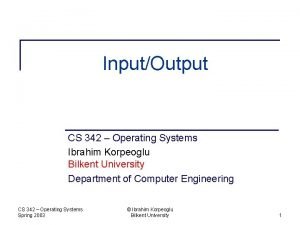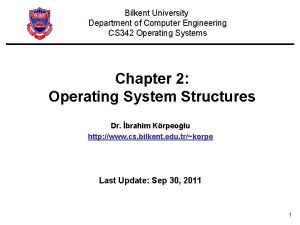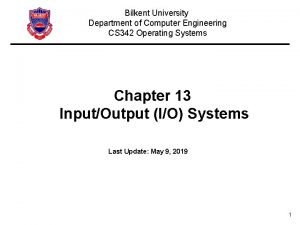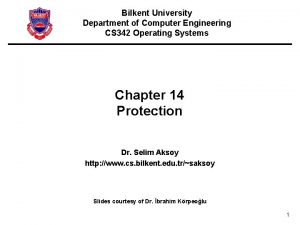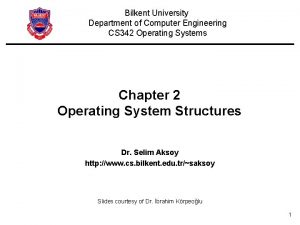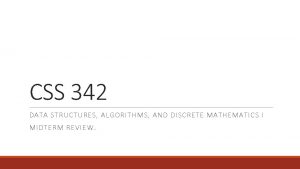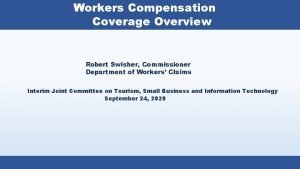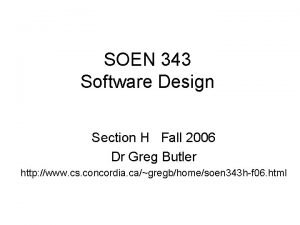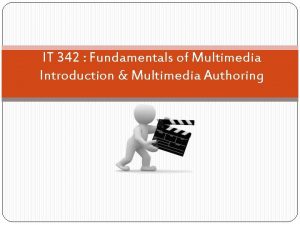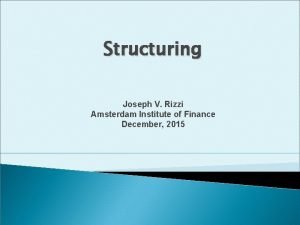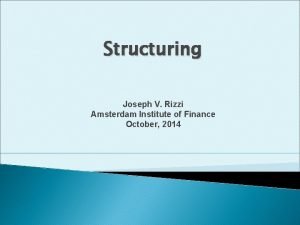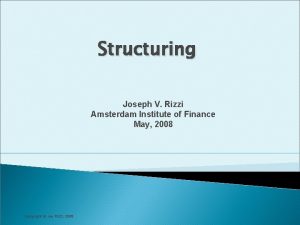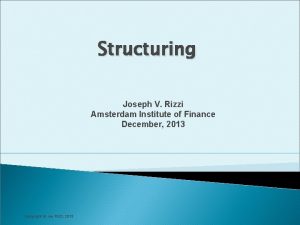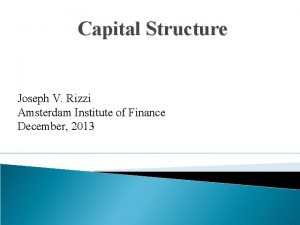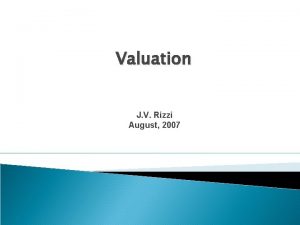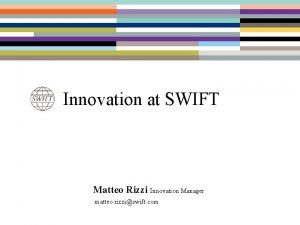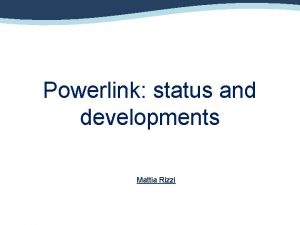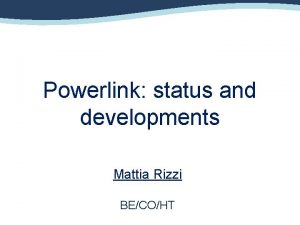Framework Joseph V Rizzi Finance 342 2013 1






















- Slides: 22

Framework Joseph V. Rizzi Finance 342, 2013 1

Agenda A. B. C. D. E. F. Main Decisions Fundamental Building Blocks Separation Principles/Decision Rules Statistics Financial Markets Decisions at Risk (DAR) 2

A. Main Decisions 1. Objective Function – what are we to maximize? 2. Investment Decision – how do we invest and manage, and why? 3. Dividend Decision – level (and form) of funds returned to the shareholders? 4. Capital Structure – how do we fund ourselves? 3

B. Fundamental Building Blocks 1. Efficient Capital Markets – price behavior in speculative markets. Complex Adaptive Systems Efficient Learning 4

B. Fundamental Building Blocks 2. Portfolio Theory – optimal security selection procedures. 3. Asset Pricing Models – determining asset prices by investors utilizing portfolio theory. 4. Option Pricing Theory – pricing of contingent claims. 5. Agency Theory – incentive conflict when benefits are concentrated but costs are disbursed. Heightened by moral hazard when you cannot observe behavior. Enhanced by behavioral bias. 5

B. Fundamental Building Blocks – Agency Theory a) Manifestation 1) Insufficient effort 2) Overinvest 3) Entrenchment 4) Self Dealing 6

B. Fundamental Building Blocks – Agency Theory b) Information asymmetries: heightened conflict between agent/managers and principals/investors Disbursement Before After Adverse Monitoring Costs Selection Moral Hazard 1) Chance vs. uncertainty 2) Ignorance vs. adverse selection 3) Dishonesty vs. moral hazard 7

B. Fundamental Building Blocks – Agency Theory c) Moral hazard = f (private benefit from misbehaving, 1/verification) d) Adverse Selection e) Responses 1) Signaling – debt levels, dividends, reputation 2) Incentives 3) Monitoring 4) Contracts – warranties, deductibles, pricing 8

B. Fundamental Building Blocks – Agency Theory f) Value implications – wedge between value and income pledge, between opportunity and financing. 1) Value – may not be externally determined 2) Financing – Agency problems/concerns may deprive firms from financing. Borrowers may make concessions to Lender to achieve funding. 3) Pecking Order 9

B. Fundamental Building Blocks – Game Theory 6. Game Theory: Economics of decision making; uncertainty lies in the intention/reaction of others. Focus on how individuals behave, anticpate and respond. Components – players, action, motives, and rules. 10

B. Fundamental Building Blocks – Behavioral Finance 7. Behavioral Finance: Prices influenced by herd vs. lead steers. The issue is whether markets are inefficient or just noisy. Requirement: arbitrage limit. Implications: (1) Investors irrational – Shield managers (2) Managers irrational – Limit discretion 11

B. Fundamental Building Blocks – Behavioral Finance a) Bias: Optimism Overconfidence Confirmation Illusion of Control b) Heuristics: Representation I/n equal weight Availability – overweight recent Anchoring – overweight initial 12

B. Fundamental Building Blocks – Behavioral Finance c) Framing: Reference points d) Manifestations: Winners curse Gamblers fallacy Sunk cost – regret avoidance (prospect theory) Reputation loss Valuation 13

B. Fundamental Building Blocks – Arbitrage 8. Arbitrage: Law of one price – equal rate of return principle 14

C. Separation Principles/Decision Rules 1) Market Value Rule: Maximize shareholder wealth. Separating ownership from management raises conflict issues. Control mechanisms: a) Management incentive compensation contract provisions. b) Management ownership interest. c) Management labor market (Reputation) d) Market for corporate control e) Internal control mechanisms (Board of Directors) 15

C. Separation Principles/Decision Rules 2) NPV Rule: Choose projects whose returns exceed their cost of capital (r ≥ c*). Need to consider multiple risk adjusted discount rates and option value of strategic investments. Discount rate is a function of the risk class. 16

C. Separation Principles/Decision Rules 3) Dividend Irrelevance: (except for: agency cost, signaling, and option pricing issues). 17

C. Separation Principles/Decision Rules 4) Capital Structure Irrelevance: (except for: taxes, agency cost, signaling, and option pricing issues). 18

D. Statistics: beware data mining, which is prevalent in nonexperimental sciences lacking controlled experiments. 1. Reliance on past as prolog vs. history. 2. Descriptive vs. predictive. 3. Issues – normality, suvivorship, stationary, independence. 4. Movements – go beyond mean and variance to skew and tails. 5. Beyond the data – out of sample issues. 6. Correlations – state dependent and lack integrating model covering both default and spread widing. 7. VAR – best of worst. Need expected shortfall analysis to get into tail. 19

D. Statistics: beware data mining, which is prevalent in non-experimental sciences lacking controlled experiments – continued. 8. Goodhart’s Law – sociological uncertainty principle – when a measure becomes a target it ceases to be a good measure (behavior change). 20

E. Financial Markets: 1) 2) Merton – neoclassical benchmark anomolies/inhibitions/transactions cost institutional solutions – overcoming inefficiencies to get back to benchmark. Means of creating missing markets. Machines – converting danger (uncontrollable damages) into risk (decision-related controllable damage) which can be traded or transferred. Focus on unintended consequences and conservations of risk principle. 21

F. Decisions at Risk (DAR) Decisions at risk (DAR): DAR Agency Problem Asymmetric Information Bias 22
 Kelly rizzi
Kelly rizzi Coso cube 2013
Coso cube 2013 Employability skills framework 2013
Employability skills framework 2013 What is sdi in california
What is sdi in california Cs 342
Cs 342 Bilkent windows 10
Bilkent windows 10 Authoring metaphors in multimedia
Authoring metaphors in multimedia Ibrahim korpeoglu
Ibrahim korpeoglu Ie 342 bilkent
Ie 342 bilkent 300 e yuvarlanan en küçük sayı
300 e yuvarlanan en küçük sayı Delta studio valea cascadelor
Delta studio valea cascadelor Cs 342 bilkent
Cs 342 bilkent Cs 342 bilkent
Cs 342 bilkent Cs342 bilkent
Cs342 bilkent Cs 342 bilkent
Cs 342 bilkent Cs 342 bilkent
Cs 342 bilkent Ie 342
Ie 342 Jesus é meu amigo meu guia, meu senhor
Jesus é meu amigo meu guia, meu senhor Css 342
Css 342 342 3
342 3 Krs 342
Krs 342 Soen 342
Soen 342 Multimedia tools
Multimedia tools
